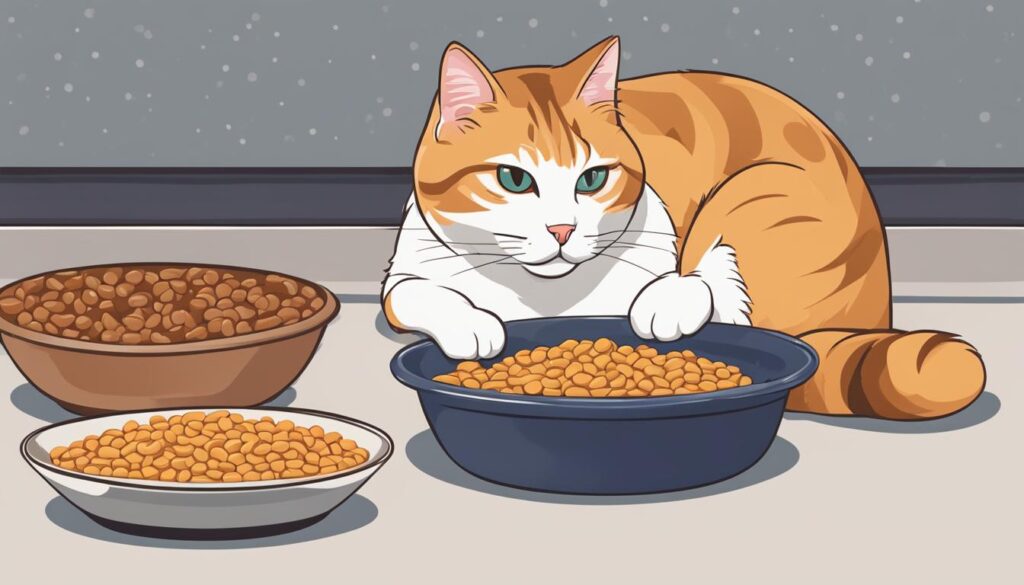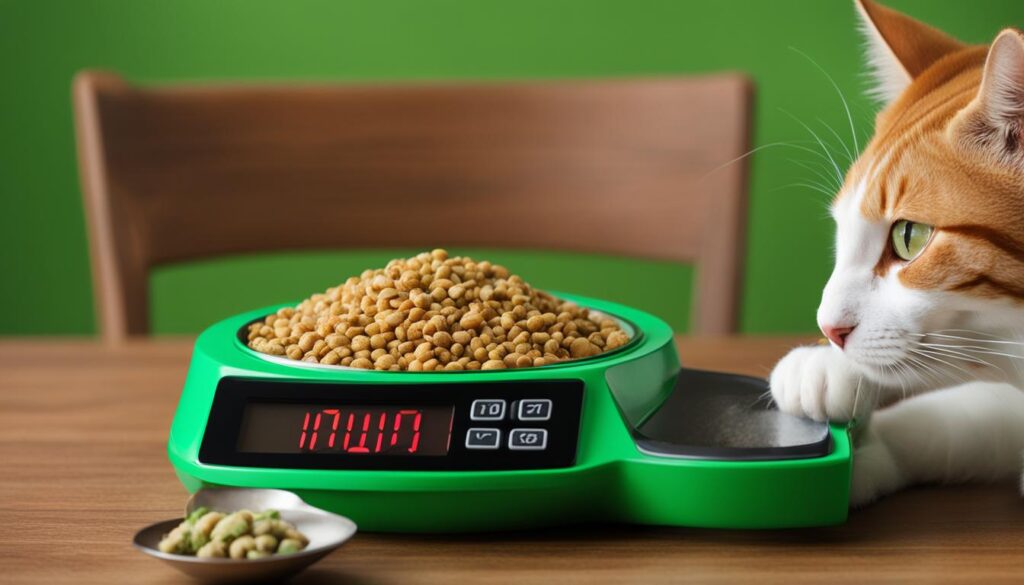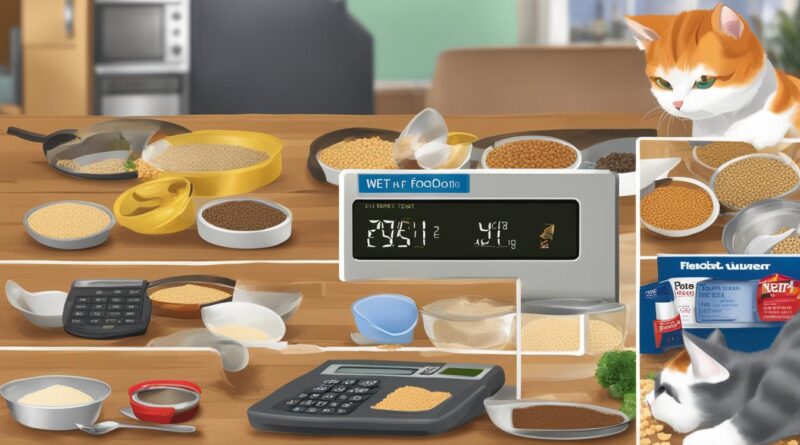Cat Wet Food Portion Calculator – Find the Right Amount
Welcome to our cat food calculator, where you can find the right amount of wet food to feed your cat. Using this calculator, you can ensure that your cat is getting the appropriate portion size and avoid overfeeding or underfeeding. This tool takes into account factors such as your cat’s weight, the proportion of wet and dry food in their diet, and their activity level. By inputting this information, you can determine the ideal amount of wet food to feed your cat each day.
How to Use the Cat Wet Food Portion Calculator
Using the cat wet food portion calculator is easy and straightforward. Here’s a step-by-step guide on how to use it:
- Enter your cat’s weight: You can either use the weight in kilograms or pounds. This will serve as the basis for calculating the portion size.
- Specify the proportion of wet and dry food: Decide on the percentage of wet and dry food in your cat’s diet. You can adjust this based on your cat’s preferences and nutritional needs.
- Enter the kcal/kg of the food: Look for the calorie content of the wet food in kcal/kg. This information can usually be found on the label or the manufacturer’s website.
- Select your cat’s activity level: Choose the activity level that best describes your cat – inactive, average activity, or high activity.
- Get the results: The calculator will provide you with the recommended amount of dry food and wet food to feed your cat per day.
How to Determine Your Cat’s Weight
To accurately determine your cat’s weight, you have a few options. You can either consult with your veterinarian and find out how much your cat weighed at their last visit, or you can purchase digital pet scales to use at home. It is recommended to have digital scales at home so you can regularly monitor your cat’s weight every 2-4 weeks. This will help you keep track of any weight changes and make necessary adjustments to their food portions. Digital pet scales are reliable and provide accurate weight measurements for your cat.
If you choose to consult with your veterinarian, they will have records of your cat’s previous weight and can provide you with an estimate of their current weight. However, if you prefer to monitor your cat’s weight at home, digital pet scales are a convenient option. They are designed specifically for weighing cats and provide precise and accurate measurements.
Using digital pet scales is simple. Here’s how you can determine your cat’s weight at home:
- Place the scales on a flat, stable surface. You can use a towel or mat to provide a comfortable surface for your cat.
- Gently place your cat on the scales, making sure they are centered and not leaning against anything.
- Wait for the scales to stabilize and display the weight. It is important to note that cats may be more comfortable and cooperative if they are gradually introduced to the scales and associate it with positive experiences and rewards.
- Record the weight and compare it to previous measurements to track any changes. This will help you determine if your cat’s weight is stable, increasing, or decreasing.
Regularly monitoring your cat’s weight is essential for their overall health and well-being. It allows you to ensure that they are maintaining a healthy weight and make adjustments to their food portions if necessary. Remember to consult with your veterinarian for personalized feeding recommendations based on your cat’s weight and specific needs.
Cat Weight Monitoring Tips:
- Use the same scales consistently for accurate weight comparisons.
- Weigh your cat at a similar time of day to account for any fluctuations.
- Keep a record of your cat’s weight in a journal or spreadsheet for easy reference.
- Monitor your cat’s body condition score in addition to their weight. This will help you assess if they are at an ideal weight or if adjustments need to be made.
| Brand | Model | Price |
|---|---|---|
| PetSafe | Digital Pet Scale | $39.99 |
| V-Resourcing | Digital Pet Scale | $19.99 |
| Greater Goods | Pet Scale | $39.95 |
Finding the Right Proportion of Wet and Dry Food
The proportion of wet and dry food in your cat’s diet is an important consideration when determining their optimal food portion. The ideal proportion can vary depending on your cat’s individual needs, preferences, and practicality. Some cat owners prefer to feed their feline companions 100% wet food, while others opt for 100% dry food. There is also the option of a mixed diet, where you provide a combination of both wet and dry food.
Consulting with your veterinarian is crucial in determining the best proportion of wet and dry food for your cat. They will consider factors such as your cat’s age, weight, overall health, and specific nutritional requirements. Your vet will be able to provide personalized recommendations to ensure your cat receives the right balance of nutrients.
Additionally, it’s worth noting that wet food can help supplement your cat’s hydration, as it contains a higher moisture content compared to dry food. This can be beneficial for cats who may not drink enough water on their own, helping prevent issues such as dehydration and urinary tract problems.
Remember, finding the right proportion of wet and dry food is a journey of trial and error. It may take some time to determine what works best for your cat’s health and overall well-being. Regular monitoring and discussions with your veterinarian will ensure that you are providing the optimal wet food amount and portion size for your beloved feline companion.

Benefits of Wet and Dry Food Combination
Combining wet and dry food in your cat’s diet can offer several benefits:
- Texture variety: Providing different textures can prevent your cat from becoming bored with their meals and can help stimulate their appetite.
- Dental health: Dry food can help promote dental health by reducing tartar buildup and encouraging chewing.
- Convenience: Dry food is more convenient in terms of storage and handling, making it easier to feed your cat during busy days or when you’re away.
- Cost-effective: Combining wet and dry food can help manage costs while still providing a nutritious and balanced diet for your cat.
Each cat is unique, and their dietary needs may change throughout their life stages. Regular check-ups with your veterinarian will ensure that you are providing the best possible nutrition for your furry friend.
Calculating the Caloric Content of the Food
The calorie content of cat food can vary depending on the brand and formulation. To ensure you are providing your cat with the appropriate nutrition, it’s important to calculate the caloric content of the wet food you are feeding them.
Here’s how you can determine the caloric content:
- Look for the kcal/kg information on the packaging or the manufacturer’s website. This information is typically found in the nutritional or feeding information section.
- If the calorie content is listed as kcal/100g, you can convert it to kcal/kg by multiplying it by 10.
-
If the company does not provide the kcal/kg information, you can estimate the number of calories per kilo using the percentages of moisture, protein, fat, crude fiber, and ash found in the guaranteed analysis or analytical constituents section.
- Multiply the percentage of protein by 4.
- Multiply the percentage of fat by 9.
- Multiply the percentage of crude fiber by 2.
- Multiply the percentage of ash by 4.
- Add these values together.
- Subtract the sum from 100 to account for moisture content.
- Divide the result by 100.
- Multiply this factor by 1000 to convert it to kcal/kg.
| Component | Percentage of Cat Food | Caloric Contribution |
|---|---|---|
| Protein | X% | X*4 |
| Fat | X% | X*9 |
| Crude Fiber | X% | X*2 |
| Ash | X% | X*4 |
| Moisture | X% | |
| Total Caloric Content | (Total Protein + Total Fat + Total Crude Fiber + Total Ash) – Moisture = Y | |
| Caloric Content per Kilogram (kcal/kg) | Y * 10 |
By calculating the caloric content of your cat’s wet food, you can ensure they are receiving the appropriate amount of calories and maintain their health and weight.

Considering Your Cat’s Activity Level
Your cat’s activity level plays a crucial role in determining their caloric needs. Cats with higher activity levels require more calories to fuel their energy, while less active cats have lower caloric needs. When using the cat wet food portion calculator, you will be prompted to select your cat’s activity level – inactive, average activity, or high activity. This important information will be taken into account to provide you with feeding recommendations tailored to your cat’s specific needs.
It’s essential to accurately assess your cat’s activity level to ensure appropriate food portions. An inactive cat may prefer lounging and napping, while an average activity level cat engages in moderate play and exploration. On the other hand, a highly active cat may be energetic and constantly on the move. By determining your cat’s activity level, you can better understand their energy requirements and adjust their wet food portions accordingly.
Feeding your cat the right portion size based on their activity level helps maintain an ideal body condition and overall well-being. Overfeeding an inactive cat can lead to weight gain and related health issues, while underfeeding a highly active cat can result in inadequate nutrition and energy deficiency. The cat wet food portion calculator takes these factors into consideration, providing you with precise feeding recommendations to ensure your cat is getting the proper amount of food to support their activity level and health.
Conclusion
Determining the right amount of wet food to feed your cat is essential for their overall health and well-being. With the help of the cat wet food portion calculator, you can accurately determine the appropriate portion size for your furry friend. By considering factors such as your cat’s weight, activity level, and the proportion of wet and dry food in their diet, the calculator provides personalized feeding recommendations.
Remember to regularly monitor your cat’s weight and body condition score to ensure they are maintaining a healthy weight. If necessary, make adjustments to their food portions accordingly. It is always recommended to consult with your veterinarian for personalized feeding recommendations tailored to your cat’s specific needs.
Using the cat wet food portion calculator eliminates the guesswork and helps you ensure that your cat is receiving the right amount of nutrients for optimal health. Feed your cat with confidence by utilizing this valuable tool to provide them with a balanced and appropriate diet.
FAQ
How much wet food should I feed my cat?
The amount of wet food to feed your cat depends on factors such as their weight, activity level, and the proportion of wet and dry food in their diet. Use our cat wet food portion calculator to determine the appropriate portion size.
How do I use the cat wet food portion calculator?
Using our calculator is easy! Simply enter your cat’s weight, specify the proportion of wet and dry food in their diet, input the kcal/kg of the wet food, select their activity level, and get the recommended feeding amounts for wet food.
How do I determine my cat’s weight?
To accurately determine your cat’s weight, you can consult with your veterinarian or use digital pet scales at home. Regularly monitoring your cat’s weight every 2-4 weeks is recommended for making necessary adjustments to their food portions.
What is the right proportion of wet and dry food?
The proportion of wet and dry food in your cat’s diet depends on their individual needs and preferences. Some owners prefer 100% wet or dry food, while others opt for a combination. Consult with your veterinarian for personalized recommendations.
How do I calculate the caloric content of wet food?
Look for the kcal/kg information on the wet food packaging or manufacturer’s website. If it’s listed as kcal/100g, you can multiply it by 10 to convert it to kcal/kg. Our calculator can also estimate the caloric content based on the moisture, protein, fat, fiber, and ash percentages.
How does my cat’s activity level affect their feeding needs?
Cats with higher activity levels require more calories than less active cats. When using the cat wet food portion calculator, you’ll be asked to select your cat’s activity level – inactive, average activity, or high activity – to provide appropriate feeding recommendations.


